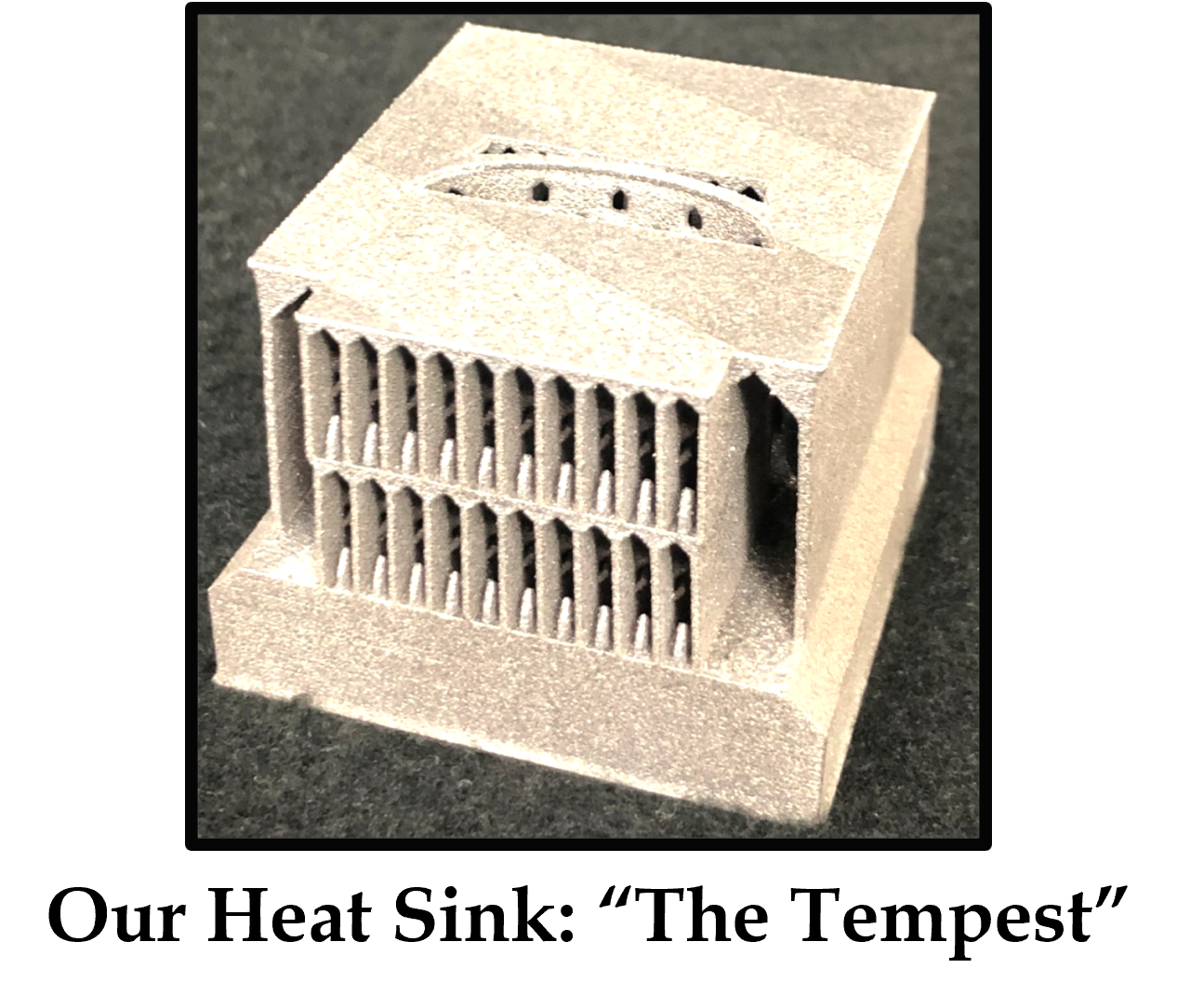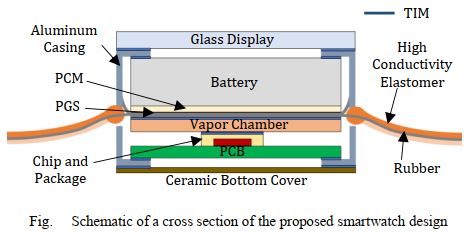The Tempest: An Air-Breathing Heat Sink
Winning entry for the ASME K-16/IEEE EPS Student Heat Sink Design Challenge 2020
Other team members: Soumya Bandyopadhyay, Julia Meyer and Adeline Naon
Faculty mentor: Justin A. Weibel

- Designed a novel forced convection heat sink by taking inspiration from Formula 1 cars, shark fins and human lungs, by exploiting the capabilities of metal 3D printing techniques.
- Was designed on the concept of flushing heated air out midway through the heat sink and taking in fresh cool air through sidepods, much like F1 cars.
- The predicted performnace was much better than the performance of conventially manufactured heat sinks.
- The heat sink was manufactured by GE and the experimental performance was even better than the predicted performance.
For more details, refer the article by GE, and the YouTube video.
Thermal Management Strategies for Next Generation Smartwatches [pdf]
ME511 course project
Guide: Dr. Justin A. Weibel
A new design for next-generation smartwatches, where not just the casing but also the belt is used to dissipate heat, was proposed and its performance was analyzed. Using a steady state analysis, it was shown that the proposed design has better thermal management capabilities than the existing devices. As compared to the peak power of 0.5W in the state-of-the-art smartwatches available today, the proposed design is able to sustain a continuous steady state operation at peak powers of about 1.65W, which is more than three times the maximum power in present devices.

The salient features of the new design are:
- Watch belts as heat exchange surfaces to increase the area from which natural convection takes place, cause in devices which rely on natural convection, the outer casing to ambient resistance is the major bottleneck.
- Vapor chambers for heat spreading inside the device.
- Phase Change Material inside the watch body to deal with the sudden burst of power during the frequent but short-lived awake state.
Particle Decay Classification Using Machine Learning
CS578 course project
Guide: Prof. Jean Honorio
- Open-source data from the ATLAS Experiment was used to classify events into ‘tau-tau decay’ and ‘background noise’ using three machine learning algorithms-kernel dual SVM, AdaBoost and Gaussian Mixture Models, and their classification capabilities were compared
Thermal Analysis of Clay Firing Process
ME505 course project
Guide: Prof. Amy Marconnet
- Obtained the transient temperature profile inside a kaolin-based ceramic plate during the firing process using analytical techniques, verified it using numerical method, and predicted the maximum permissible firing and cooling rates to prevent cracking due to thermal shocks